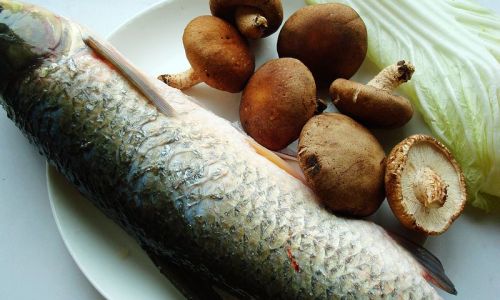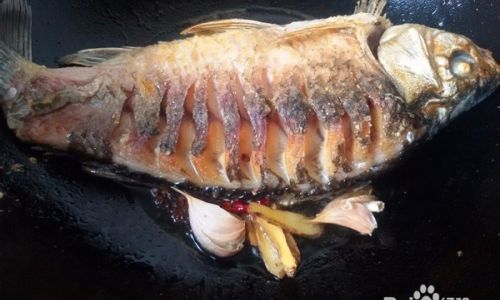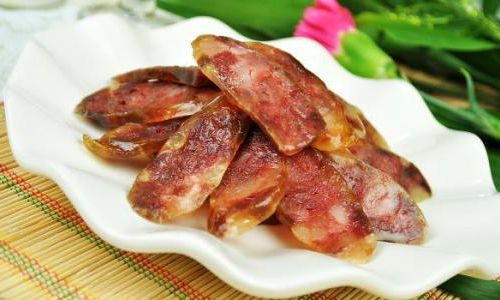Table of content
Grass carp, a freshwater fish native to Asia, has become a beloved ingredient in global cuisines due to its mild, sweet flavor and tender, flaky texture. When prepared correctly, grass carp chunks can transform into a culinary masterpiece, whether pan-fried, steamed, or braised. This guide delves into the nuances of selecting, preparing, and cooking grass carp to perfection, ensuring every bite is a celebration of flavor and technique.
Understanding Grass Carp: A Brief Introduction
Grass carp (Ctenopharyngodon idella) is prized for its lean, white flesh, which absorbs seasonings and sauces exceptionally well. Unlike oily fish like salmon, grass carp has a low-fat content, making it a healthy choice for those seeking a lighter protein source. Its subtle taste allows it to pair seamlessly with bold flavors, from spicy Sichuan peppercorns to aromatic herbs like cilantro and basil.
In many Asian cultures, grass carp is a staple in festive dishes, symbolizing abundance and prosperity. However, its versatility extends beyond tradition—modern chefs and home cooks alike experiment with it in salads, tacos, and even sushi rolls. The key to unlocking its potential lies in proper preparation, starting with selecting the freshest fish and mastering the art of cutting it into uniform chunks.
Selecting the Freshest Grass Carp
The foundation of a great dish begins at the market. When purchasing grass carp, prioritize freshness using these indicators:
- Eyes: Clear, bright eyes with no cloudiness.
- Gills: Vibrant red or pink gills, not brown or slimy.
- Flesh: Firm to the touch, with a shiny, metallic sheen. Avoid fish with dull or discolored skin.
- Smell: A fresh, oceanic aroma, not overly “fishy” or pungent.
If purchasing whole fish, ask the fishmonger to scale, gut, and remove the head for convenience. For pre-cut fillets, ensure the flesh is intact with no signs of freezer burn or excessive moisture.

Preparing Grass Carp Chunks: Knife Skills and Techniques
Proper butchery ensures even cooking and maximizes flavor. Follow these steps:
- Remove the Backbone: Lay the fillet skin-side down. Using a sharp, flexible knife, slice along the central line where the backbone once was. This separates the flesh into two loins.
- Trim Fins and Bones: Run your fingers along the flesh to locate any remaining pin bones. Use tweezers to remove them.
- Cut Against the Grain: Grass carp has a delicate muscle structure. Cutting against the grain (perpendicular to the muscle fibers) prevents the chunks from becoming stringy. Aim for 2-inch cubes, ensuring each piece is uniform in size for consistent cooking.
Marination: The Flavor Foundation
Marinating grass carp is non-negotiable. Its mild flesh benefits from acidity (to tenderize), salt (to season), and aromatics (to elevate). A classic marinade includes:
- Soy sauce (or tamari for gluten-free): 3 tbsp
- Ginger, grated: 1 tbsp
- Garlic, minced: 2 cloves
- Rice wine (or dry sherry): 1 tbsp
- White pepper: ½ tsp
- Cornstarch: 1 tsp (to seal in moisture)
Technique: Combine ingredients in a bowl, add fish chunks, and toss gently. Marinate for 30 minutes to 1 hour in the refrigerator. Avoid over-marinating, as the enzymes in ginger and garlic can toughen the flesh if left too long.
Cooking Methods: From Crispy to Tender
Pan-Frying for Crispy Perfection
Pan-frying creates a golden, caramelized crust while keeping the interior moist.
Ingredients:

- Grass carp chunks (marinated)
- Neutral oil (e.g., vegetable or peanut): ¼ cup
- Cornstarch (for dredging): ½ cup
Steps:
- Dredge: Lightly coat each chunk in cornstarch, shaking off excess.
- Heat Oil: In a non-stick skillet, heat oil over medium-high until shimmering.
- Fry: Add fish in a single layer (work in batches to avoid overcrowding). Cook for 3–4 minutes per side until golden.
- Drain: Transfer to a wire rack to maintain crispiness.
Serve With: Lemon wedges, steamed rice, and a drizzle of chili oil.
Steaming for Health-Conscious Delights
Steaming preserves the fish’s delicate texture and nutrients.
Ingredients:
- Grass carp chunks (marinated)
- Ginger, julienned: 2 tbsp
- Scallions, sliced diagonally: 2 tbsp
- Sesame oil: 1 tsp
- Soy sauce: 2 tbsp
Steps:

- Prep: Place fish on a heatproof plate. Top with ginger and scallions.
- Steam: Bring water to a boil in a steamer. Place the plate inside and cover. Steam for 8–10 minutes until opaque.
- Finish: Drizzle with sesame oil and soy sauce. Garnish with cilantro.
Serve With: Jasmine rice and stir-fried bok choy.
Braising in Flavorful Broth
Braising infuses the fish with rich, aromatic flavors.
Ingredients:
- Grass carp chunks (marinated)
- Chicken or vegetable stock: 2 cups
- Shaoxing wine: 2 tbsp
- Dark soy sauce: 1 tbsp
- Rock sugar: 1 tbsp
- Star anise: 1 piece
- Dried chili peppers: 2 (optional)
Steps:
- Sear: In a Dutch oven, sear fish chunks until lightly browned. Remove and set aside.
- Build Broth: Add stock, wine, soy sauce, sugar, star anise, and chilies. Bring to a simmer.
- Braise: Return fish to the pot. Cover and simmer gently for 15–20 minutes until tender.
- Thicken: Optional: Mix 1 tsp cornstarch with water and stir into the broth for glossiness.
Serve With: Silken tofu, pickled vegetables, and a bowl of steamed rice.

Serving Suggestions and Pairings
- Dipping Sauces: Elevate pan-fried chunks with a tangy soy-vinegar dip (1:1 ratio of soy sauce and rice vinegar, plus a pinch of sugar).
- Vegetable Pairings: Broccoli, snow peas, or mushrooms complement the fish’s mildness.
- Noodle Integration: Toss steamed chunks with udon noodles and a miso-based broth.
- Leftovers: Flake cold fish into salads with avocado and cherry tomatoes.
Expert Tips for Culinary Excellence
- Pat Dry: Before frying, ensure fish is dry to prevent sizzling oil and a soggy crust.
- High Heat: Use medium-high heat for searing to achieve Maillard reaction without overcooking.
- Adjust Seasoning: Taste and tweak marinades—add a touch of honey for sweetness or doubanjiang for heat.
- Avoid Overcooking: Grass carp becomes dry if cooked beyond 145°F (63°C). Use a meat thermometer for precision.
Troubleshooting Common Pitfalls
- Mushy Texture: Over-marinating or low cooking temperature.
- Fishy Aftertaste: Poor-quality fish or insufficient rinsing.
- Sticking to Pan: Inadequate oil or overcrowding.
Cultural Variations and Modern Twists
- Sichuan-Style: Add Sichuan peppercorns and doubanjiang (chili bean paste) to the braising liquid.
- Mediterranean Infusion: Marinate in lemon zest, oregano, and olive oil, then grill.
- Spicy Tacos: Shred pan-fried chunks and serve in corn tortillas with mango salsa.
Conclusion: The Joy of Grass Carp
Grass carp chunks are a canvas for culinary creativity. Whether you prefer the crunch of pan-fried pieces, the tenderness of steamed fillets, or the depth of braised morsels, mastering these techniques ensures a memorable meal. Experiment with marinades, spices, and accompaniments to discover your signature dish. With patience and practice, even a novice cook can elevate this humble fish into a restaurant-worthy delight.
Final Tip: Always cook with intention—grass carp rewards mindful preparation with unparalleled flavor. Bon appétit!






0 comments